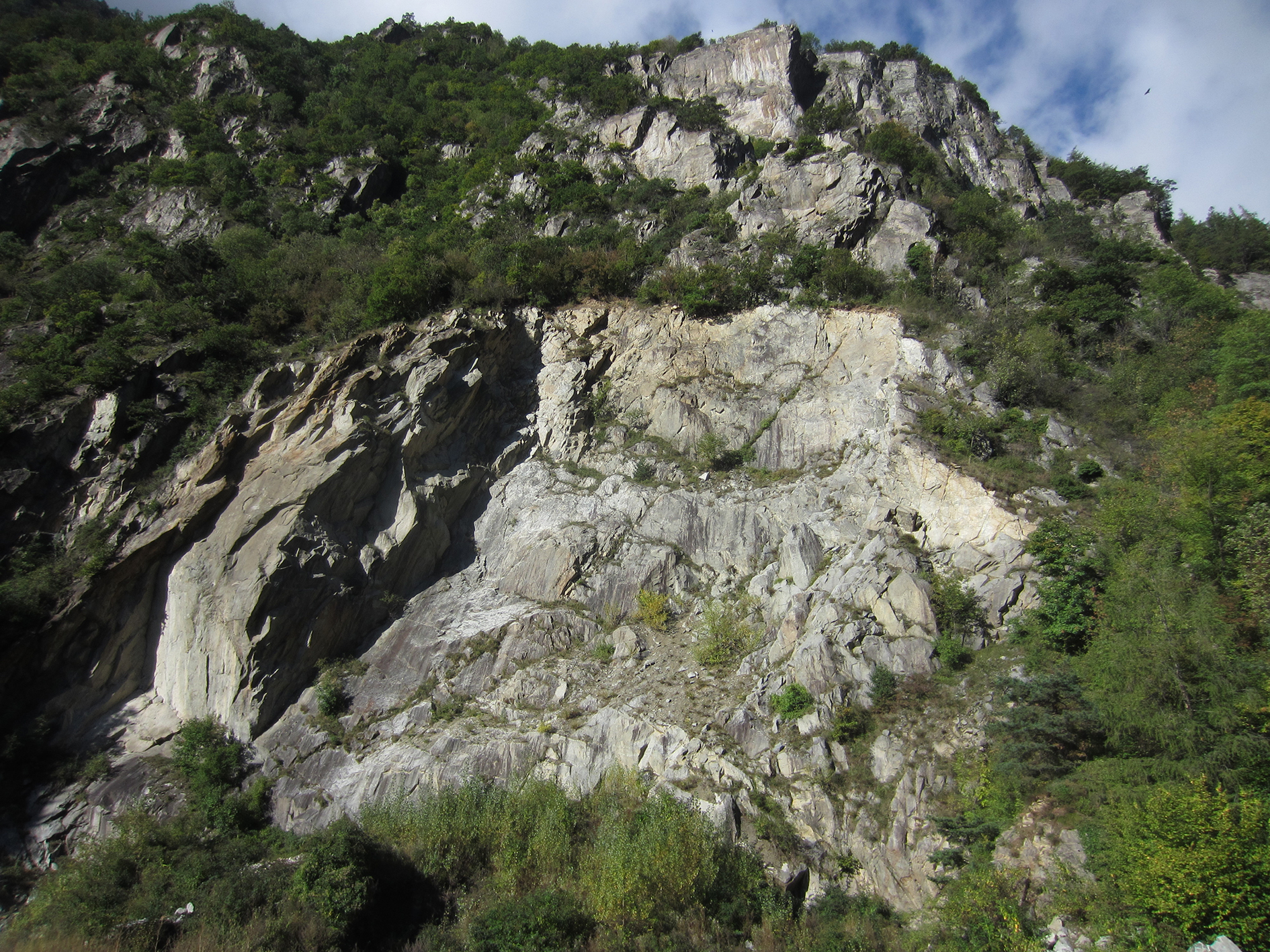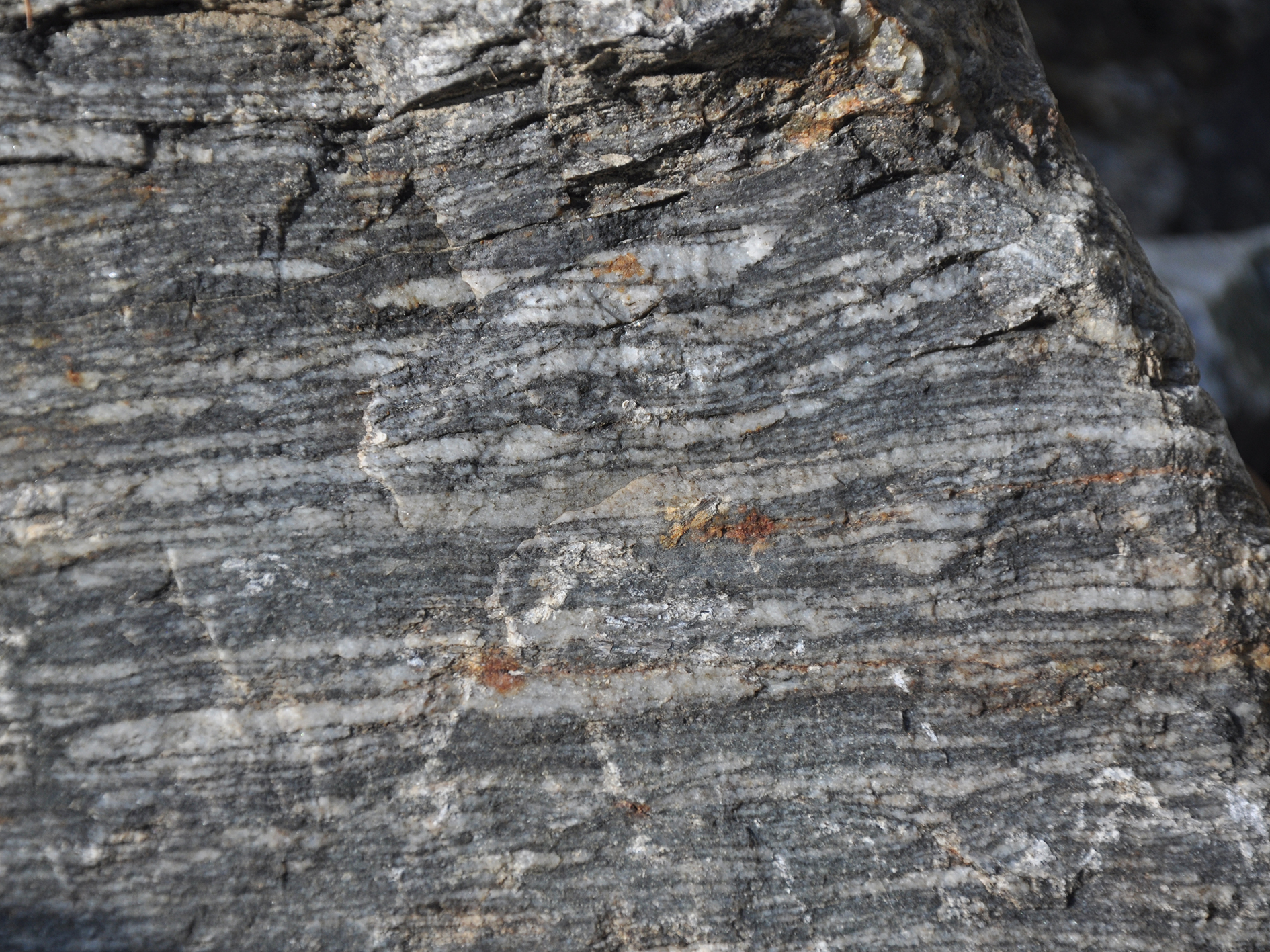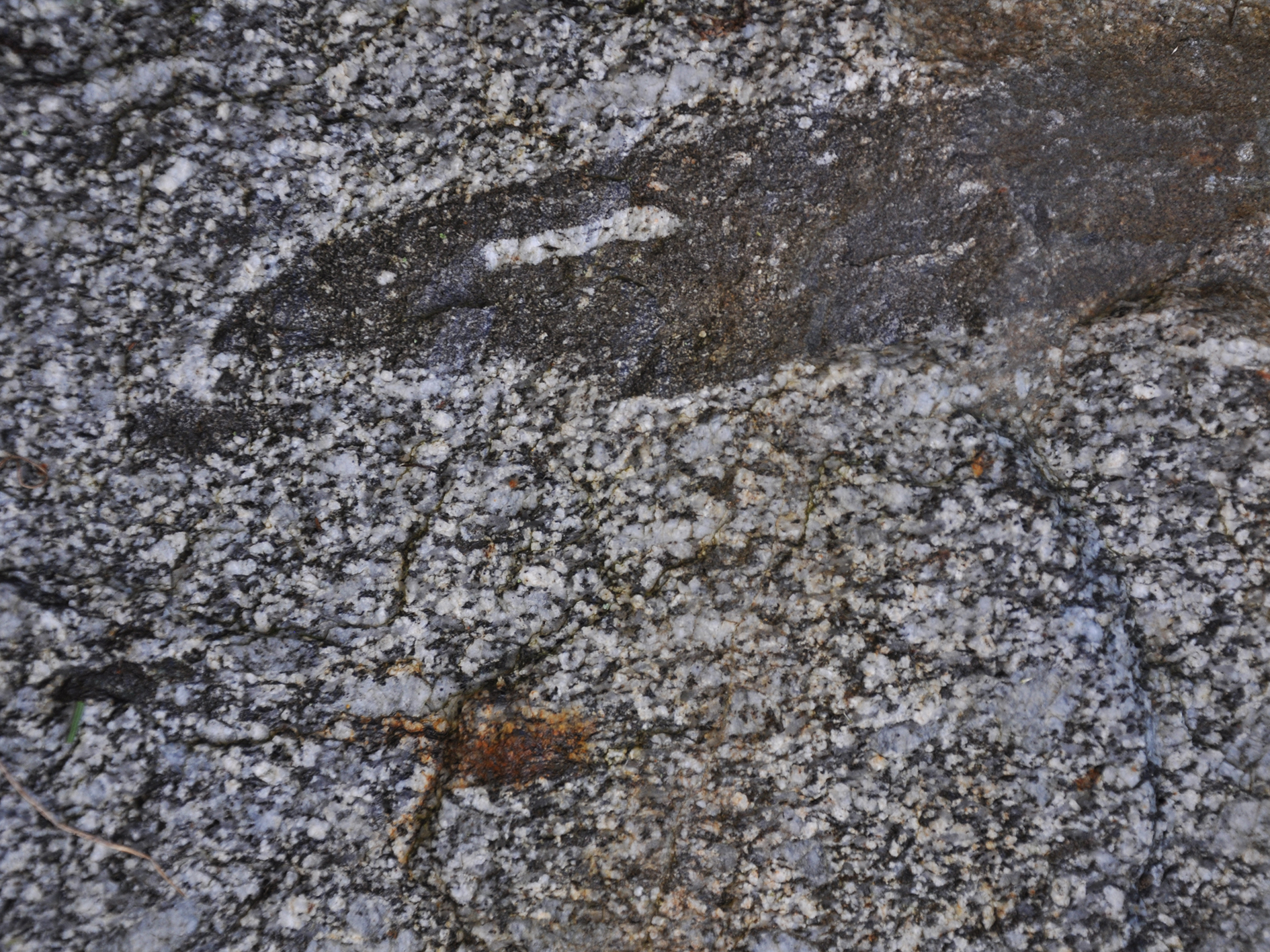Granite de Vallorcine
Retour à Massif des Aig. RougesReprésentation et statut
- Couleur CMYK
- (0%,48%,56%,6%)
- Couleur RGB
- R: 240 G: 125 B: 105
- Rang
- Formation lithostratigraphique
- Usage
- Ce terme est en usage.
- Status
- terme informel
Nomenclature
- Deutsch
- Vallorcine-Granit
- Français
- Granite de Vallorcine
- Italiano
- Granito di Vallorcine
- English
- Vallorcine Granite
- Origine du nom
- Variantes historiques
-
granite de Valorcine (Necker 1828), granite de Valorsine (Delesse 1850), Valorsine-Granit = Granit bei Poyaz (Gerlach 1871), Valorsine-Granit = Granit der Barberine (Studer 1872), granite de Vallorcine (Corbin & Oulianoff 1931, Dhellemmes 1955, Krummenacher 1959), Vallorcine-Granit (Labhart & Rybach 1972), Vallorcine anatectic granite (Bussy et al. 2000, Capuzzo et al. 2003); mylonite: Reinhard & Preiswerk 1927
Links
Hiérarchie et succession
- Unité hiérarchiquement supérieure
- Unités hiérarchiquement subordonnées
- Limite inférieure
-
Contact intrusif dans le Complexe gneissique du Brévent visible dans la région de Vallorcine (Dhellemmes 1955).
Âge
- Âge au sommet
-
- Carbonifère tardif (= Pennsylvanien)
- Âge à la base
-
- Carbonifère tardif (= Pennsylvanien)
- Méthode de datation
-
307 +/-2 Ma (U/PB on zircon and monazite ; Bussy et al. 2000), 306.5 +/-1.5 Ma
Géographie
- Extension géographique
- Etroite bande s'étendant d'Argentière (vallée de Chamonix) à Vernayaz (plaine du Rhône), sur le flanc SE de la partie septentrionale du massif des Aiguilles Rouges.
- Région-type
- vallée de Vallorcine
- Coupes de référence
-
-
Carrière de Miéville (VS)
Coordonnées- (2568270 / 1110960)
- <p>différents stades de mylonitisation sont observables</p>
-
Carrière de Miéville (VS)
Paléogéographie et tectonique
-
- Roches plutoniques varisques de l'Helvétique
- Termes génériques
-
-
Aiguilles Rouges
:
massif des Aiguilles Rouges
-
Aiguilles Rouges
:
- Type de protolithe
-
- plutonique
- Métamorphisme
- monocyclique
- Faciès métamorphique
-
- faciès à schistes verts (épizone)
- Remarque sur le métamorphisme
-
contact SE intensément mylonitisé
Références
- Définition
-
(1828) :
Mémoire sur la vallée de Valorsine. Mém. Soc. phys. hist. nat. Genève IV 209
«Granite à feldspath blanc dominant, à quartz gris, à mica noir, dont les feuillets sont irrégulièrement disséminés dans toute la masse. De grands cristaux de feldspath donnent à ce granite la structure porphyrique». (Necker 1828 p.209)
- Révision
-
(2001) :
Mont-Blanc, Aiguilles-Rouges massifs (External Massifs) - an example of polyorogenic evolution. Fieldtrip Guide 1, 53-84, Univ. Lausanne
p. 67: Located in the northern part of the Aiguilles- Rouges massif (stop 1A and 1G1), the Vallorcine granite is a 15-km-long by 1-km thick sheet-like pluton (see fig. 23), which intruded at 306.5 ± 1.5 Ma along a steeply dipping, NE-SW trending, dextral strike-slip shear zone (Brändlein 1991; Brändlein et al. 1994). Syntectonic intrusion is inferred on the basis of structural analysis, which documents long-lasting strike-slip shearing both in the country rocks (pre- and post-intrusion fabrics) and in the granite. The latter developed an early NE-SW trending magmatic flow structure, evolving locally into a post-solidus foliation. The Vallorcine granite was subsequently affected along its SE contact by an intense low-T ductile shearing leading to the well-known “Miéville ultramylonite” (Kerrich et al. 1980) of Late Variscan age (but reworked during the Alpine orogeny). Alpine relief provides a 2000 m-high natural cross-section through the pluton. The lowermost facies is a biotite-rich monzogranite hosting numerous enclaves up to 30 cm in size; including gneiss xenoliths from the country rocks, hornfelses, micaceous restites with sillimanite and hercynite, early cordierite-bearing leucogranite blocks and mafic microgranular enclaves. The upper facies is finer-grained with less biotite and almost no enclaves, pointing to an enclave unmixing process during upward motion of the magma. Aplitic and subvolcanic dykes are concentrated within the wall rocks of the upper contact. The Vallorcine intrusion is a typical S-type granite, as confirmed by zircon typology, stable isotopes (Brändlein et al. 1994) and the presence of Al-rich minerals (cordierite, muscovite, andalusite, etc.).
- Principales publications
-
(1828) : Mémoire sur la vallée de Valorsine. Mém. Soc. phys. hist. nat. Genève IV 209(1850) : Analyse du granite de Valorsine. Bull. Soc. geol. Fr. (2) VII, 424(1972) : Der Vallorcine-Granit und seine radiometrischen Anomalien. Schweiz. Min. Petr. Mitt. 52/3, 571-574
-
Mylonite de Miéville
- Name Origin
- Rang
- Membre lithostratigraphique (Sous-formation)
- Statut
- terme local (informel)
- Durée de validité
- Vallorcine-Granit
- En bref
- Large zone mylonitique affectant la bordure SE du Granite de Vallorcine, ainsi que son encaissant. Cette structure d'âge tardi-varisque a été réactivée lors de l'orogenèse alpine.



